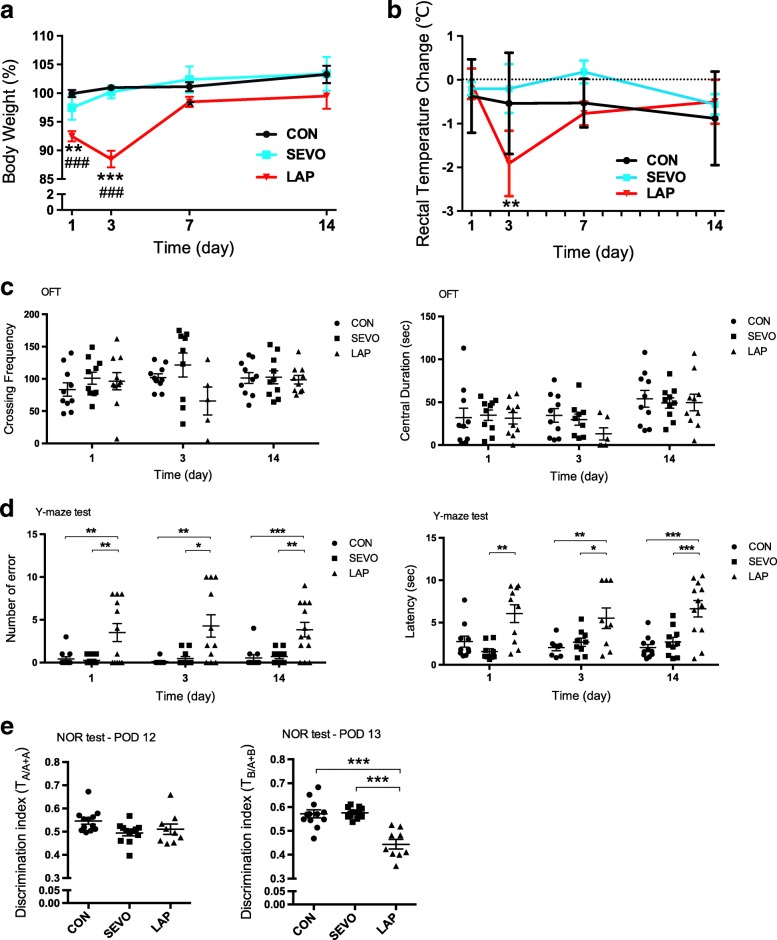Fig. 5.
Persistent cognitive impairment during postoperative period. a Body weights as percentage of baseline were analyzed using a two-way ANOVA followed by Bonferroni’s post hoc test (F2,103 = 42.75; LAP vs. SEVO, *p = 0.0445, **p = 0.0059, ***p < 0.0001; LAP vs. CON, ###p < 0.0001; on POD 14, LAP vs. SEVO, p = 0.0531). b Rectal temperature was analyzed by two-way ANOVA followed by Bonferroni’s post hoc test (**p = 0.0071, F = 2.588). c In the open filed test, locomotor activity and anxiety indicated by grid crossing frequency and central exploration time respectively on POD 1, 3, and 14. d In the Y-maze test, longer escape latency and greater error number showed working memory deficits on POD 1, 3, and 14. e In the novel object recognition (NOR) test, discrimination index (DI) was the ratio of exploration time of one object to two objects, old object (A) to (A + A) on POD 12, or new object (B) to (A + B) on POD 13. There was no object and location preference during the familiarization session. a–e n = 9–12, *p < 0.05, **p < 0.01, ***p < 0.001

